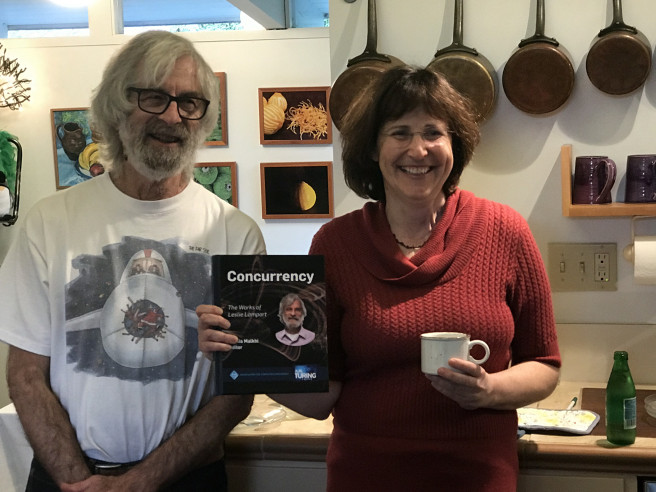“Concurrency” Book is Here
Today, I am proud to announce that a book I edited titled “Concurrency: The Works of Leslie Lamport” has just been published and is available on Amazon ; Google books ; ACM books .

Sharp as a razor, Leslie has unique intuition and insights on distributed systems that bring clarity and new angles on problems. Those of us who collaborated with him often found the experience remarkable and sometimes even career-altering. Personally, I am awed when I look back at the ten years at Microsoft Research SVC during which I had the pleasure of working with and alongside Leslie. He taught me several wisdoms.
-
Spending his research career in industrial research environments was not an accident. “I like working in an industrial research lab, because of the input”, Lamport said. “If I just work by myself and come up with problems, I’d come up with some small number of things, but if I go out into the world, where people are working on real computer systems, there are a million problems out there. At MSR, he used to tell us: “Go to the engineers and see what problems they are tackling – this is the best source of questions.”
-
Lamport never stopped when he found a solution. He continued working until the solution was elegant and minimal, and then he continued to seek succinct abstractions to express it. He told me once: scientists should operate as if an insistent child is asking them “but why? but why?”; they should keep simplifying and simplifying until they have a solution that satisfies the child, until there is no more asking.
-
Lamport maintains a webpage of his collected writings that tells of many paper rejections and of works that came to impact decades after they were conceived. I referred many students to this page for inspiration and encouragement. It is a constant reminder that scientific truth and ethics are more important than getting papers published.
In July 2014, I watched Lamport deliver his Turing Award lecture at the annual ACM conference on Principles of Distributed Computing (PODC) in Paris, France. He came on stage (in shorts and a t-shirt) and received a spontaneous standing ovation that lasted a few minutes; the audience just didn’t want to stop. He was stunned and really humbled that people loved him that much.
Fast forward to 2017, when the ACM editor approached me with an invitation to edit a book on Lamport, I agreed almost immediately. No, I was not bored. On the contrary, I was in the midst of working on a product launch at VMware, as well as leading blockchain research and incubation. It was crazy of me to take on this commitment, but I couldn’t pass on the privilege of celebrating Lamport’s work. I don’t regret saying yes, this project was a pleasure and an honor.
The book is a collaborative work with several prominent members of the community, chapter authors who volunteered their time and expert perspective on timeless notions Lamport introduced: the Bakery algorithm, atomic shared registers and sequential consistency; causality and logical time; Byzantine Agreement; state machine replication and Paxos; the temporal logic of actions (TLA). I am deeply indebted to all of them for their contribution.
The book describes a lifetime achievement and the long-lasting impact Lamport had on the computer science field. It paints with the benefit of retrospect a picture of how timeless impact on the foundations of concurrency has been formed.
I naturally recommend it as a holiday gift to all your friends and colleagues ;-)




